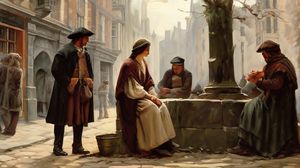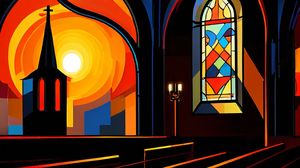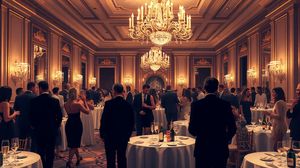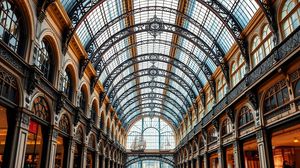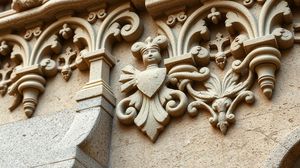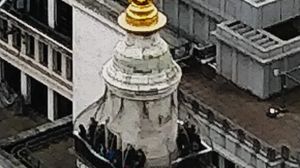
The Monument to the Great Fire of London is an iconic structure commemorating the catastrophic fire that swept through the city in 1666. Standing at 202 feet in height, it is located near the spot where the fire is thought to have started, at a bakery on Pudding Lane. This stunning column, designed by Sir Christopher Wren and Robert Hooke, features a gilded flame at the top, symbolizing the fire that reshaped the city.
One fascinating feature of the Monument is its interior spiral staircase, consisting of 311 steps. Visitors who conquer this climb are rewarded with a panoramic view of London's skyline from the viewing platform. This perspective offers a glimpse into both the cityscape that rose from the ashes and London's continuing evolution.
The Monument itself is constructed of Portland stone and is an impressive feat of 17th-century engineering. It was completed in 1677, over a decade after the fire, serving as a symbol of the city's resilience and reconstruction. It also stands as one of the tallest isolated stone columns in the world.
An interesting fact about the Monument is its original design also incorporated plans for it to be used as a scientific instrument. The hollow shaft was intended to function similar to a zenith telescope for measuring the height of stars and atmospheric pressure, a testament to the Enlightenment's spirit of discovery and innovation.
The Latin inscriptions on the base of the Monument describe the Great Fire and the subsequent rebuilding of the city, offering visitors not only a structural masterpiece but also a narrative of one of London's most transformative periods. It's a place where history and architectural brilliance combine.
Despite its often solemn association with the Great Fire, the Monument also reflects a unique bit of creative history. The planning and design allowed for it to serve as an experimental underground laboratory for pioneering experiments in physics, although these experiments were seldom conducted. This reflects the vision and ingenuity of its designers.

Making the Most of Your Visit:
Try visiting on a weekday morning to avoid the crowds. The staircase can get quite busy, especially as space is limited at the top, so early arrivals will have a more peaceful experience.
Make sure to wear comfortable shoes. The climb up the 311 steps is a bit of a workout, and sturdy footwear will make the ascent more pleasant. Also, take your time and enjoy the unique perspective of winding your way up an old spiral staircase.
Don't forget your camera or smartphone! The view from the top offers unique angles of London's skyline, including close-up views of modern landmarks and the delightful mix of old and new architecture.
After your visit, take a moment to relax in the nearby St. Magnus the Martyr Church. It's a lovely historic spot to reflect on your climb and enjoy some peace after the excitement of the Monument.
If you're fascinated by science, think about the groundbreaking experiments that were imagined here. The Monument wasn't just a memorial but also a tool of scientific inquiry, reflecting London's innovative spirit during the Enlightenment.

Visiting Times & Costs:
The Monument to the Great Fire of London is open to the public. Its regular opening hours are from 9:30 AM to 6:00 PM, with the last admission at 5:30 PM. Please note that it may have different opening times during public holidays or seasonal variations, so check locally before planning a visit.
The entrance fee for adults is £6.00. Children aged 6 to 16 can visit for £2.50, and under 6s have free entry when accompanied by an adult. There are also concessions available for seniors and students, priced at £4.00. Family tickets are available as well for £15.00, covering up to two adults and two children.
Accessibility can be a concern, as the Monument features a narrow, spiral staircase with 311 steps and no lift. It may not be suitable for visitors with mobility impairments or certain health conditions. It is advisable for visitors to assess their ability to climb the stairs before purchasing a ticket.

Address & Map:

Nearby:










